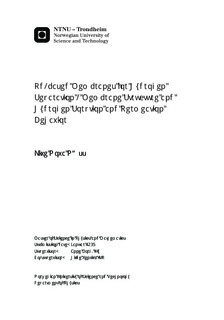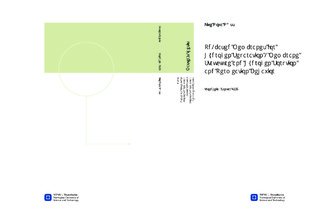| dc.description.abstract | Efficient separation of hydrogen from gas mixtures is a truly enabling technology for hydrogen as an energy carrier. Palladium(Pd)-based membranes are 100% selective to hydrogen, but need to be made thin, yet without defects in order for the technology to be applicable. The motivation for this work has been to examine solubility properties and surface topography for Pd-based membranes, and further elucidate the influence these parameters have on the overall hydrogen permeation capabilities. Extremely thin, defect-free Pd-alloy membranes supplied by SINTEF Materials and Chemistry were investigated in this study. Thin Pd/Ag23wt.% free standing films of thickness 4 μm and 8 μm were inves- tigated before and after heat treatment in air at 300 C. A revealing trend of increased flux resulting from this heat treatment was observed. Surface topogra- phy studies by atomic force microscopy (AFM) showed a correlating increase in surface roughness as a result of the heat treatment. In addition, surface topogra- phy investigation was performed on a hydrogen stabilized 8 μm thick Pd/Ag23wt.% membrane. High increase in roughness was detected on feed side whereas minimal roughness alteration was observed on permeate side of the membrane. Equilibrium sorption measurements of H2 in Pd/Ag23wt.% films of various thick- nesses (2.2-10 μm) were performed at 300 C, 350 C and 400 C to the measure the film’s solubility properties. A pronounced temperature dependence was observed for all membranes, that is, high solubility at low temperatures and vice versa for high temperatures. This is consistent with theory and previously reported solu- bility results. A thickness dependence for the H2 solubility was observed in the equilibrium sorption results. Thinner membranes showed better solubility capa- bilities than the thicker ones. Surface characterization showed increasing surface roughness on growth side on these as-grown films in correspondence with augmen- tation in film thickness. The correlative surface roughness and solubility alterations related to thickness indicate a plausible membrane bulk structural dependence of the solubility. Finally, sorption equlibrium measurements on very thin Pd alloy films, ∼2 μm, of Pd/Ag23wt.%, Pd/Au5at.% and Pd/Y5at.% were carried out at 300 C, 350 C and 400 C. All three palladium-alloys showed decreasing solubility properties for in- creasing temperature. The Pd/Ag23wt.% membrane showed the highest solubility capabilities, succeeded closely by the Pd/Y5at.% membrane, while the Pd/Au5at.% membrane was not comparably capable to ad-/absorb H2 gas. This is concluded as a result of unequal lattice expansion effects the different alloying elements exert in a pure Pd lattice. The hydrogen permeation is a complex function of many parameters. In this work parameters such as, hydrogen pressure, temperature, material composition, mem- brane thickness and surface structure have demonstrated their influence on the membranes solubility and/or permeation abilities. | nb_NO |

